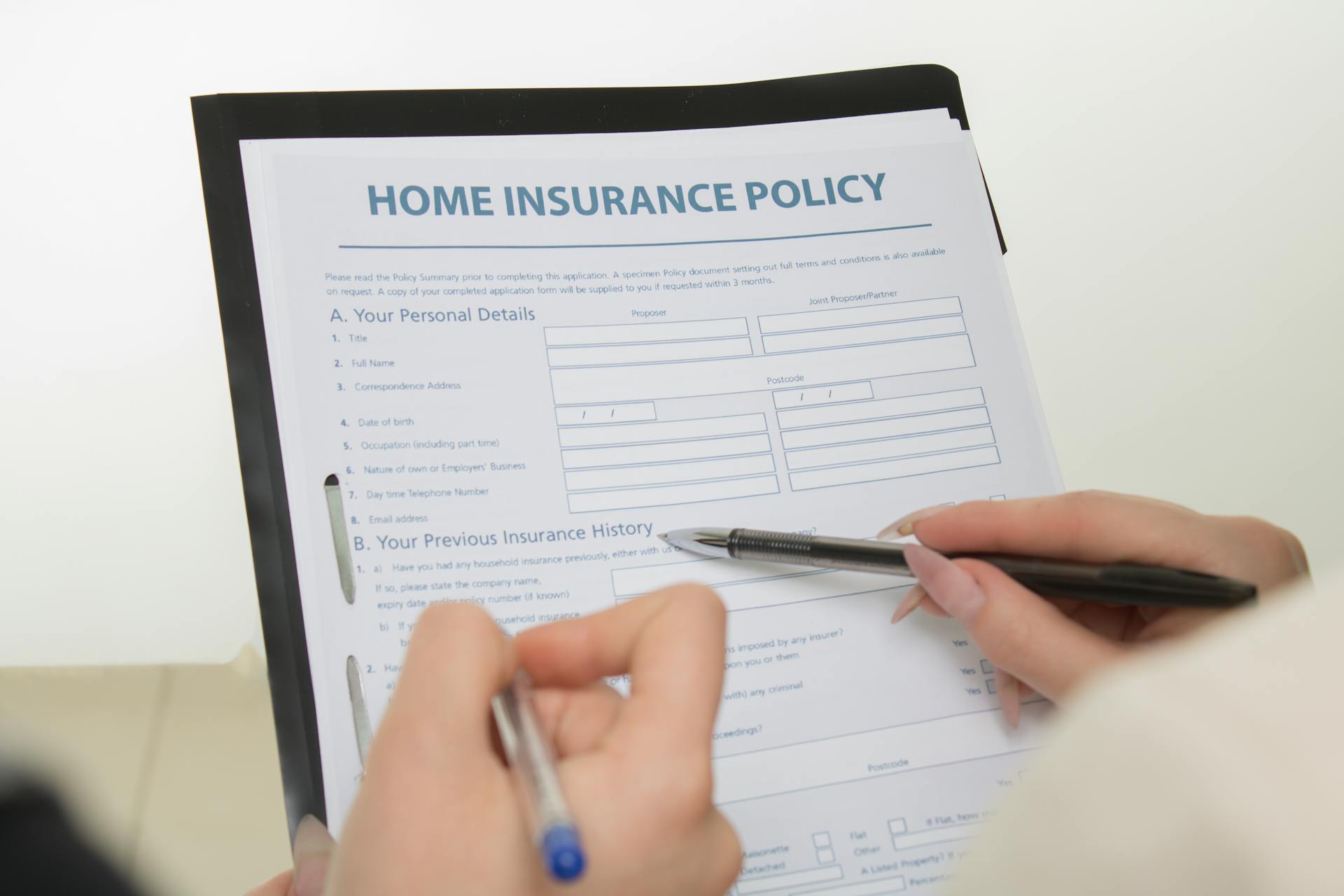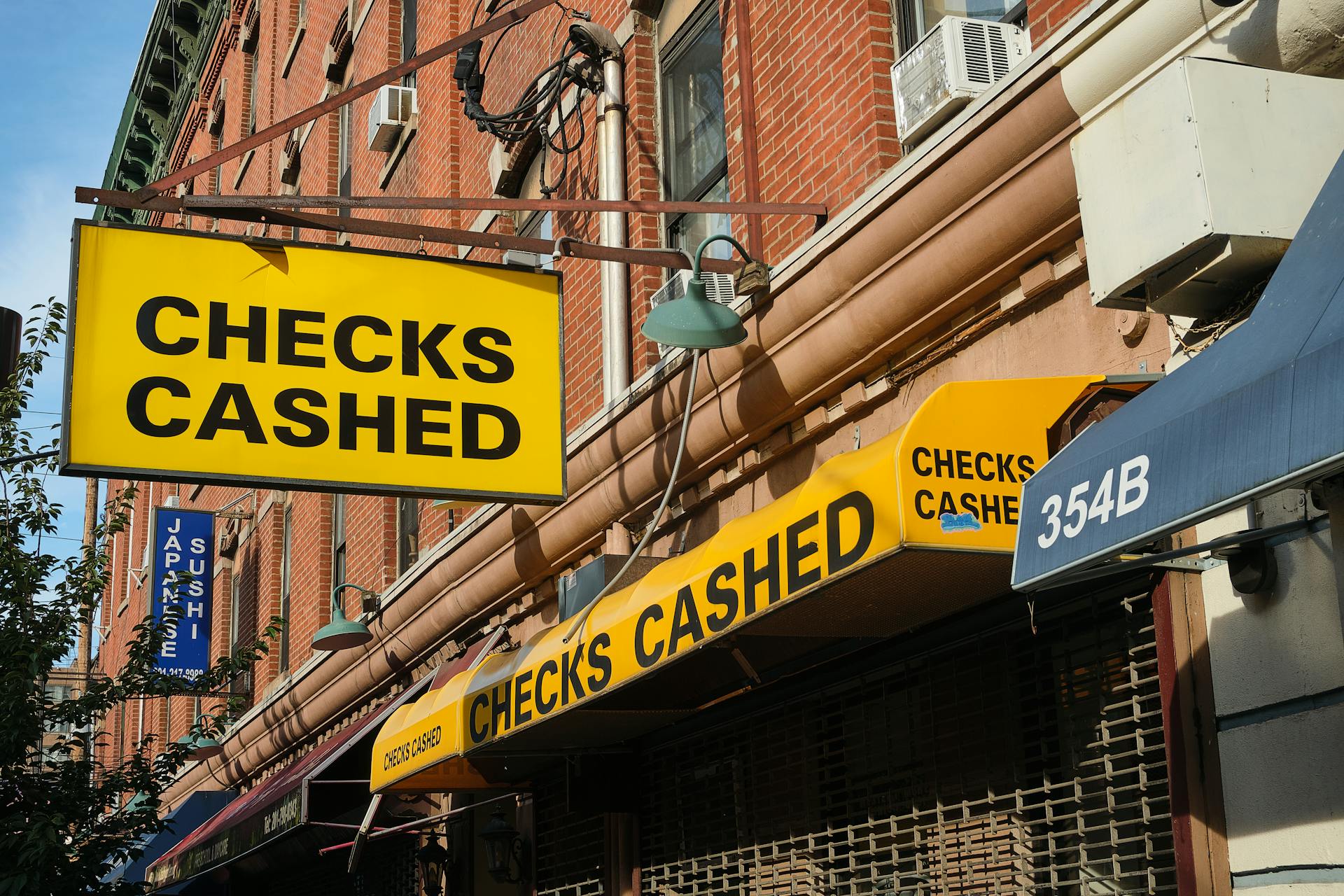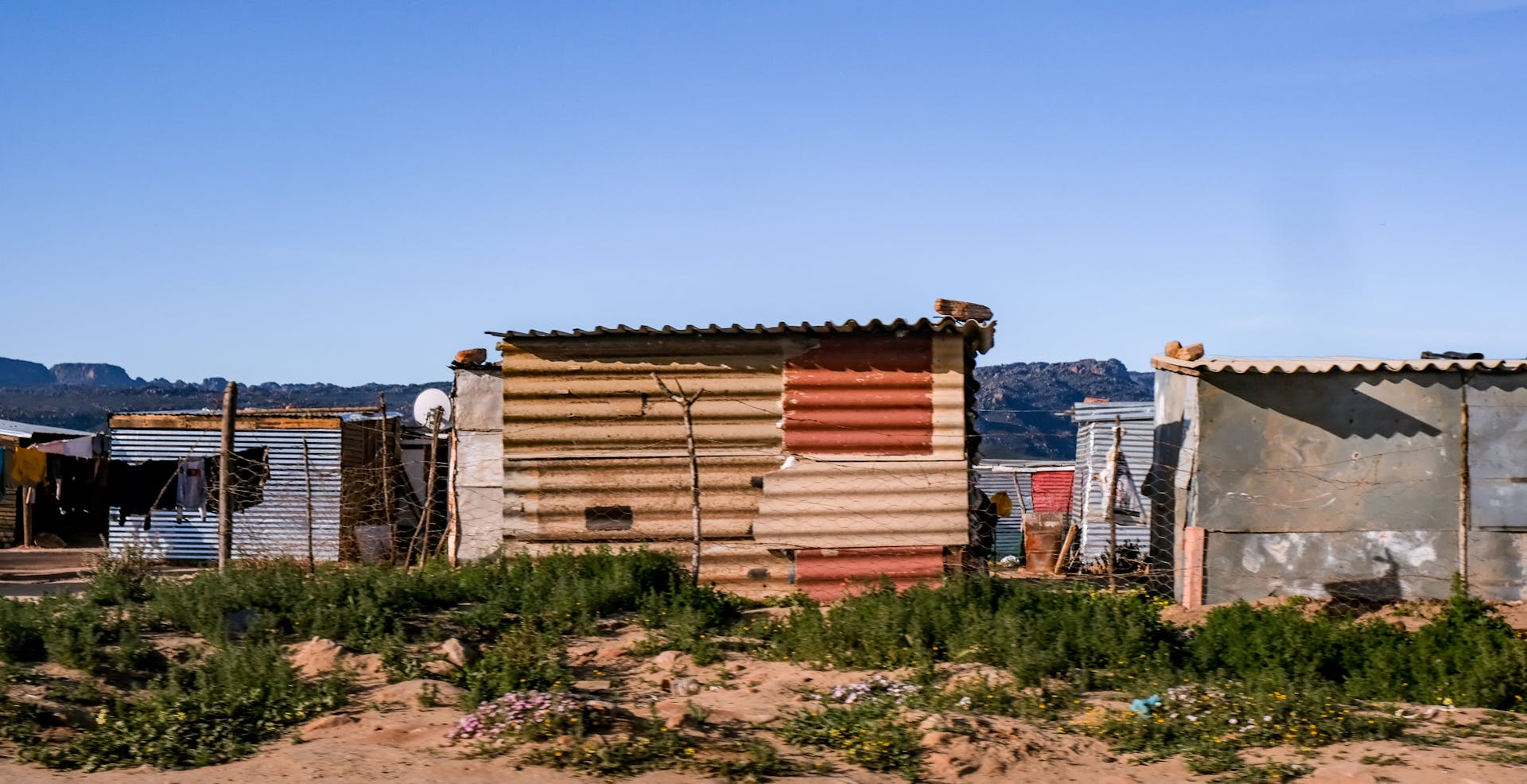
Homeowners insurance can provide financial protection for temporary housing costs, but it's essential to understand what's covered and what's not. Typically, homeowners insurance policies cover temporary housing expenses, such as hotel bills, if you're forced to vacate your home due to a covered loss.
The amount of coverage for temporary housing varies by policy, but most policies have a daily or weekly limit. For example, a policy might cover up to $100 per day for temporary housing expenses.
If you're unsure about your policy's temporary housing coverage, review your policy documents or contact your insurance provider for clarification. They can help you understand what's covered and what's not, so you can plan accordingly.
A different take: Does Flood Insurance Cover Temporary Housing
Does Homeowners Insurance Cover Temporary Housing?
Your home insurance policy likely includes coverage for temporary housing solutions following a claim. This is often referred to as Additional Living Expenses or ALE.
Most homeowner insurance policies cover temporary housing for everyday living expenses while you're rebuilding from significant damage or loss of your home. This can include things like rent, utilities, and food.

Your policy may cover your accommodation costs if you evacuate due to a potential risk of damage by a covered peril such as a hurricane or wildfire. This means you can stay in a hotel, apartment, or any other place you choose, as long as it's necessary.
The coverage amount is based on the valuation of your current home, which can help cover a variety of living expenses. This clause is often available to policyholders who are unaware of it.
You can use your ALE funds for anything that requires displacement from your home, not just natural disasters. This includes damage to your home caused by a covered loss, making it unsafe to reside.
Calculating and Filing Claims
To file a claim for temporary housing, you must follow your insurer's instructions. This typically involves submitting a claim and any receipts showing additional expenses incurred due to not living in your normal dwelling.
Inform your insurance provider as soon as possible to initiate the claims process. They can guide you through the process and help you gather the necessary documentation.
You'll need to provide receipts for any additional living expenses, such as hotel stays or food costs, to support your claim.
Calculating Coverage Needed

To determine how much additional living expenses coverage you need, break down your expenses into categories like housing, utilities, meals, transportation, and miscellaneous costs.
You'll need to list individual expenses under each category, such as gas, water, internet, and cable TV costs.
Note the cost and the additional expense you incurred for each expense, and remember that additional living expenses (ALE) coverage doesn't cover your already existing regular expenses, so you need to subtract that amount.
The equation to calculate your ALE claim amount is: Total additional living expenses - Normal living expenses = ALE claim amount.
For example, if your living expenses while your home was uninhabitable for three months were $12,000, and your everyday living expenses for three months were $8,500, your ALE claim would be $3,500.
Here's a breakdown of the categories you should consider:
Keep in mind that the amount paid will depend on your policy limits, so it's essential to review your policy carefully to understand what's covered and what's not.
Filing Claims

You must inform your insurance provider at the earliest so they can help you file an additional living expenses insurance claim.
To use temporary housing coverage, your home must be deemed uninhabitable after a covered loss.
You can only file an ALE claim if you're forced from your home due to a covered peril or evacuation order.
Temporary housing coverage typically has no deductible, but the limits and deductibles for this coverage vary by state and policy, so it's best to contact an insurance agent for more information.
ALE claims can't be filed if you move out while renovations are being done voluntarily, nor will it pay if the damage is due to an excluded peril like flooding.
A unique perspective: House Insurance Public Liability
File The Claim
To file a claim for additional living expenses, you'll need to follow your insurer's instructions. This typically involves submitting the claim and any receipts showing you had additional expenses because you weren't living in your normal dwelling.

You must inform your insurance provider at the earliest so they can help you file an additional living expenses insurance claim. This ensures a smooth process and helps you get the reimbursement you need.
Keep receipts for all your additional living expenses, as your insurer typically requires you to submit copies of your receipts for review prior to issuing a reimbursement check. This is crucial in getting reimbursed for your expenses.
Here's a list of covered expenses that may be included in your claim:
- Increased food expenses, such as eating at restaurants due to lack of access to a kitchen
- Laundry
- Moving fees
- Parking fees
- Rates for staying at a hotel or apartment
- Storage costs for household items
- Transportation costs for increased mileage to home
- Utilities
Remember, loss of use coverage will not cover your mortgage or rent payment during the time you're unable to live in your home due to a covered loss.
How Cash Advances Work
Getting a cash advance from your insurance company can be a lifesaver, but it's not always easy. You need to ask for it, and if the adjuster says no, you need to push a little more and go up the chain.

You don't have to wait for a lump-sum check at the end of the process; insurance companies generally reimburse for expenses as they are incurred. This means you can get money to cover your bills as you need it.
Keep meticulous records of every expenditure and save all your receipts in a waterproof, zippered pouch. Without receipts, you don't get payment.
Remember, it's essential to keep track of your expenses to ensure you get reimbursed correctly.
Temporary Housing Options and Costs
Temporary housing coverage, also known as loss of use coverage, is a common part of standard homeowners insurance policies.
Typically, no deductible applies to this coverage, but you should contact an insurance agent to learn more about limits and deductibles for your specific policy.
You can use this coverage to help cover expenses related to maintaining a short-term residence, such as a hotel or apartment, after a covered loss has made your home uninhabitable.
Readers also liked: What Are the Three Main Types of Property Insurance Coverage

The specific type of temporary housing your insurance covers depends on factors like your home's current value, the coverage in your policy, and your family's needs.
Homeowner's insurance can provide coverage for additional living expenses, including hotels, apartments, houses, and even travel trailers, if you must be displaced from your home while it is being repaired.
Most commonly, following a natural disaster, homeowner's insurance hotel coverage is where policyholders are placed until long-term solutions can be found.
Temporary housing companies like Catale help policyholders navigate the process of finding housing following a claim or natural disaster, and they often have partnerships with national brands to provide access to inventory not available to the public.
At Catale, they believe in leading with service, going the extra mile to ensure that your needs are met, unlike some other companies that focus solely on volume and treating people like commodities.
A unique perspective: Does My Homeowners Insurance Cover My Injury
Homeowners Policy and Coverage
Your homeowners policy typically offers loss of use coverage, which pays for additional living expenses if your home is not suitable to live in due to a covered loss. This coverage is usually 10% or 20% of your dwelling coverage, depending on your policy.
Worth a look: Garage Keepers Liability Coverage

If you have $200,000 in dwelling coverage, for example, you'd be covered up to $20,000 or $40,000 in the event of a covered loss. This means you can get reimbursed for expenses like temporary housing, additional fuel costs, and even boarding your pets.
Some examples of loss of use/additional living expenses include temporary housing, additional fuel costs, and additional food expenses. You can refer to the following list for a more comprehensive breakdown of what's covered:
- Temporary housing (hotel or rental home)
- Additional fuel costs
- Additional utilities
- Additional food expenses (groceries, restaurants, cooking supplies)
- Storage units
- Boarding of pets
- Laundry
- Moving costs
- Public transportation fees
- Parking fees
What Is Not Covered
Temporary living expense coverage is a valuable part of a homeowners policy. It helps pay for additional living expenses when your home is temporarily uninhabitable due to damage or other issues.
Loss of use coverage typically doesn't cover fees associated with canceling your lease or mortgage. These are expenses you'll need to cover out of pocket.
Preexisting expenses, such as your wireless bill, are also not covered by loss of use coverage. This means you'll need to continue paying these bills even if you're temporarily living elsewhere.

Rent or mortgage for your permanent residence is another expense that loss of use coverage won't cover. This can be a significant expense, so it's essential to factor it into your temporary living arrangements.
Here are some examples of expenses that loss of use coverage typically doesn't cover:
- Fees associated with canceling your lease or mortgage
- Preexisting expenses, such as your wireless bill
- Rent or mortgage for your permanent residence
Homeowners Policy
A homeowners policy is a must-have for any homeowner, and it's essential to understand what it covers. Loss of use coverage is a crucial part of a homeowners policy, paying for additional living expenses if your home is not suitable to live in due to a covered loss.
You can expect loss of use coverage to pay for expenses like temporary housing, additional fuel costs, and food expenses. These expenses are calculated based on the excess of what you normally spend, not your total living expenses.
The amount of loss of use coverage varies depending on your policy, but it's typically 10% or 20% of your dwelling coverage. For example, if you have $200,000 in dwelling coverage, you'd be covered up to $20,000 or $40,000 in the event of a covered loss.
Additional reading: Household Insurance Cover

Here's a breakdown of what loss of use coverage might cover, based on the excess of your normal expenses:
- Temporary housing: hotel or rental home
- Additional fuel costs
- Additional utilities
- Additional food expenses (groceries, restaurants, cooking supplies)
- Storage units
- Boarding of pets
- Laundry
- Moving costs
- Public transportation fees
- Parking fees
Remember, loss of use coverage is designed to help you cover the extra expenses you incur while your home is being repaired or rebuilt. It's not meant to cover your everyday living expenses, so be sure to subtract those from your total additional living expenses.
Claiming and Extending Coverage
To claim temporary housing coverage, you'll need to file a claim with your insurer, submitting receipts for additional living expenses. This process typically starts after a covered event like a disaster or damage to your home.
Your insurer will guide you through the process, and you'll need to provide receipts showing you had additional expenses because you weren't living in your normal dwelling. This might include costs like hotel stays or rental fees.
Some insurers only offer loss of use coverage for a certain amount of time after a covered loss, so be sure to check your policy limits. This can vary by state, so it's a good idea to verify with your insurer.

Keep all your receipts for additional living expenses, as your insurer will typically require you to submit copies for review before issuing a reimbursement check. This can help ensure a smooth claims process.
If you need help finding a place to stay, your insurance company can usually assist. They may even be able to arrange temporary housing options, like a hotel or apartment, to get you settled quickly.
Frequently Asked Questions
What is the standard coverage for loss of use for lodging?
Loss of use coverage typically ranges from 20% to 30% of your dwelling coverage limit. This amount may not be enough to cover increased living expenses, so review your policy carefully.
Sources
- https://www.amfam.com/resources/articles/at-home/homeowners-insurance-temporary-housing
- https://www.insurance.com/home-and-renters-insurance/natural-disasters/additional-living-expenses.html
- https://littlensons.com/blog/will-my-home-insurance-cover-a-hotel-stay/
- https://www.catale.com/post/temporary-housing-for-insurance-claims
- https://www.progressive.com/answers/loss-of-use-insurance/
Featured Images: pexels.com

